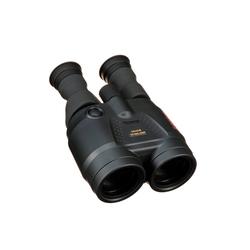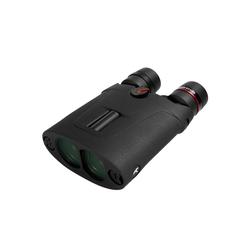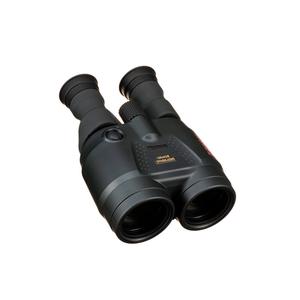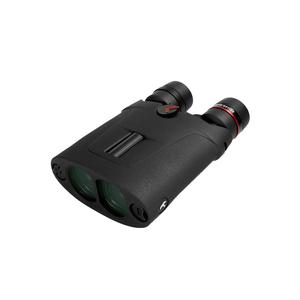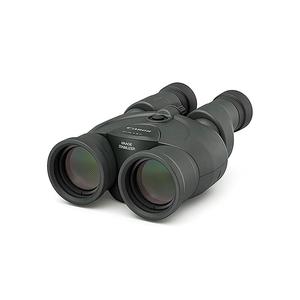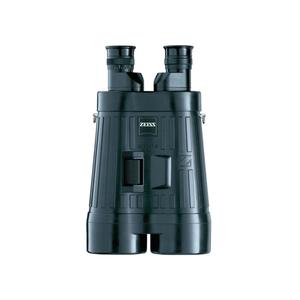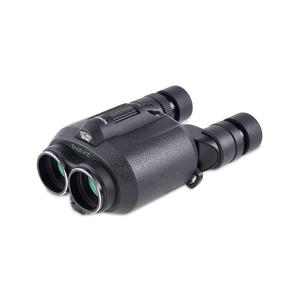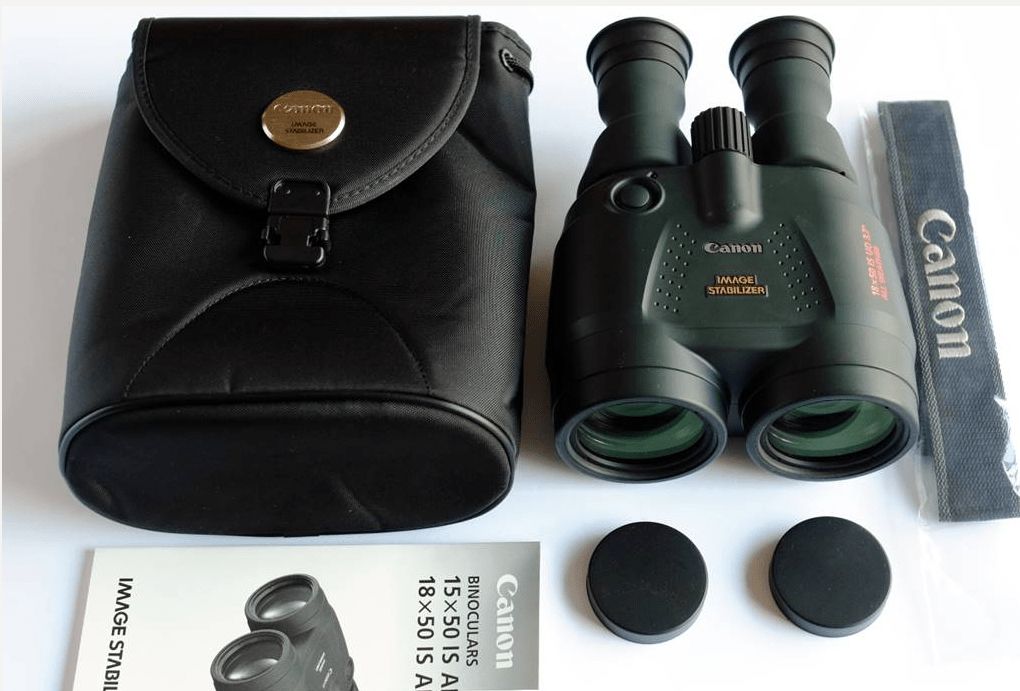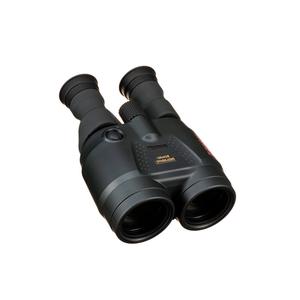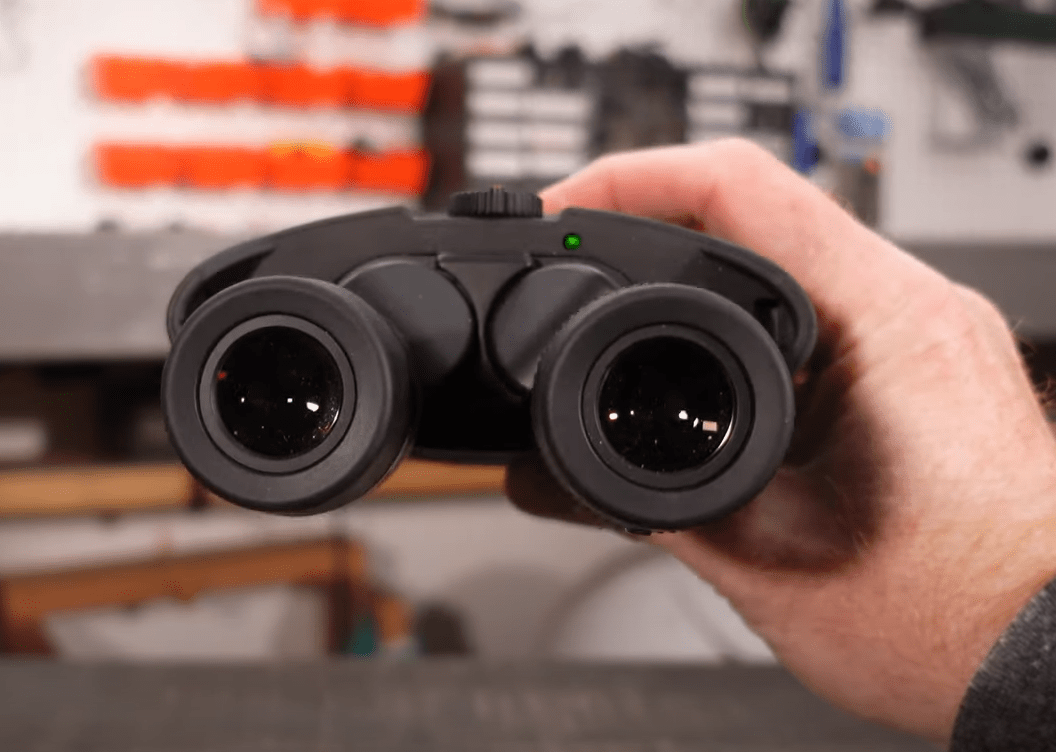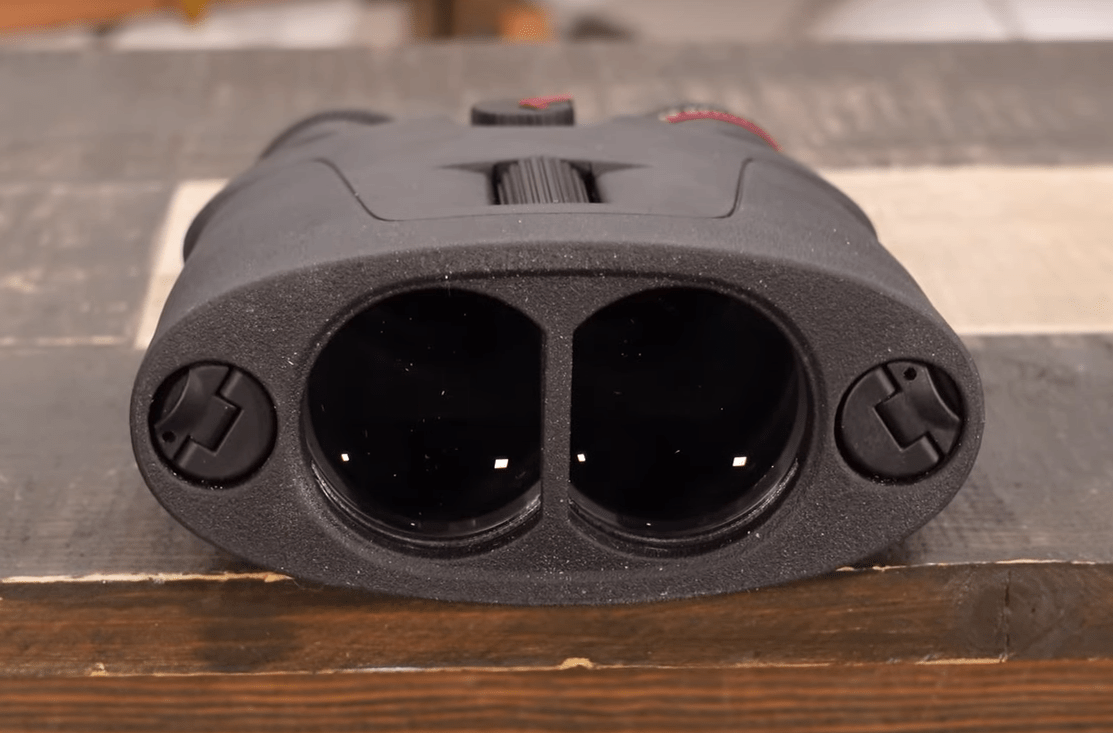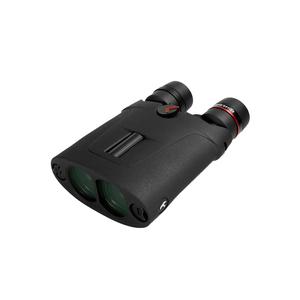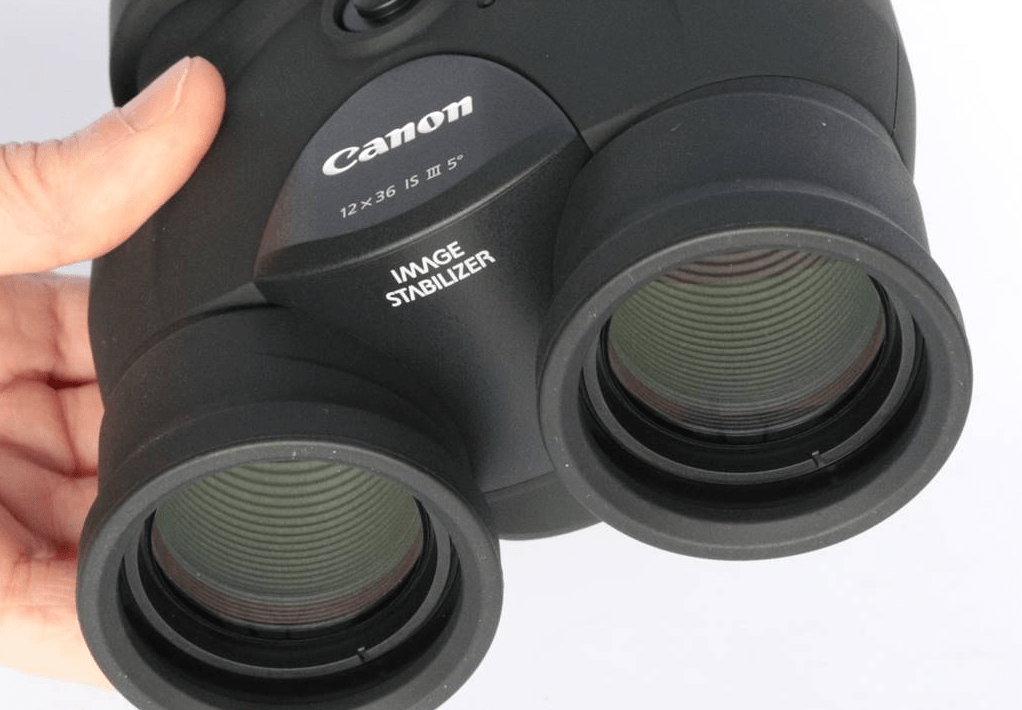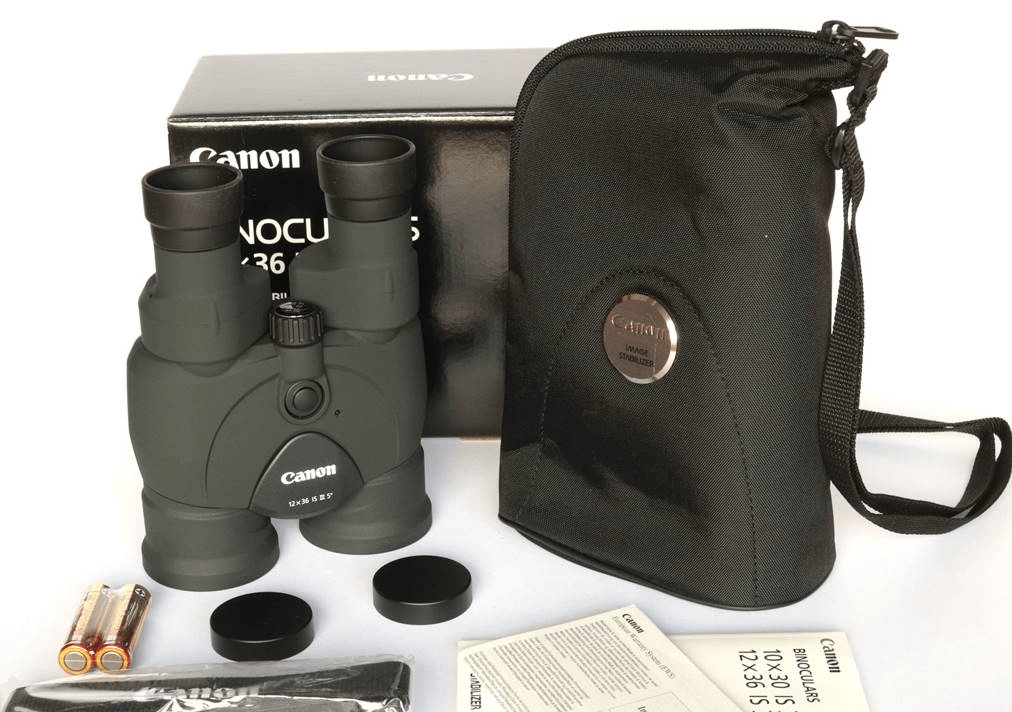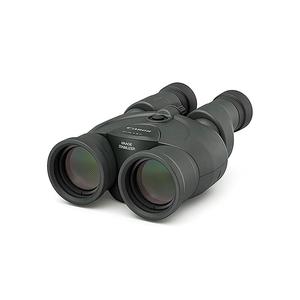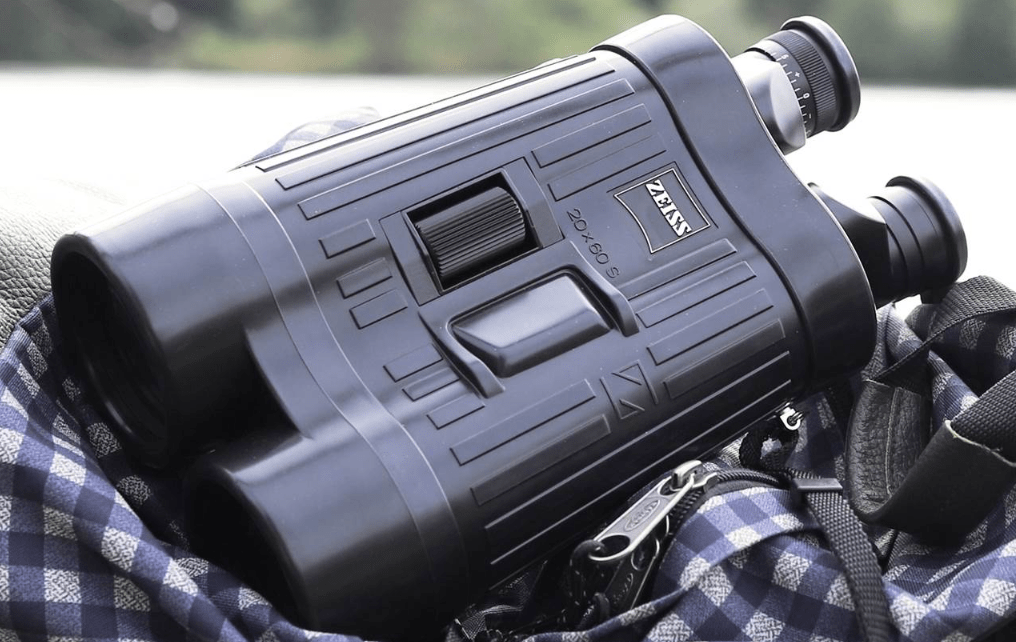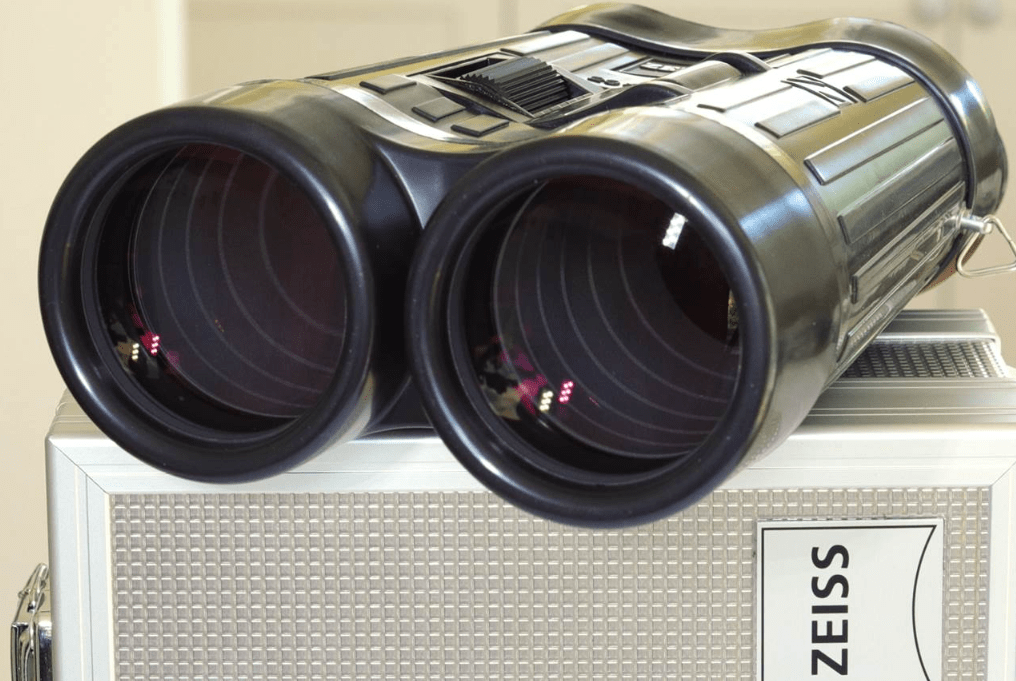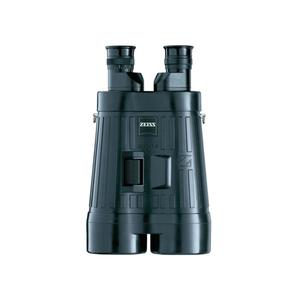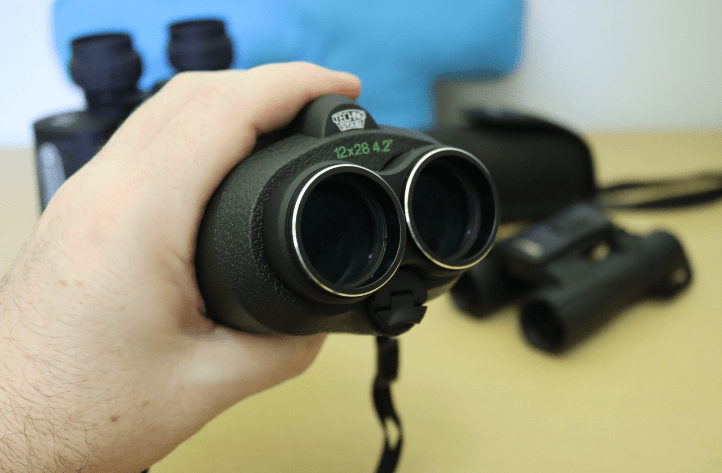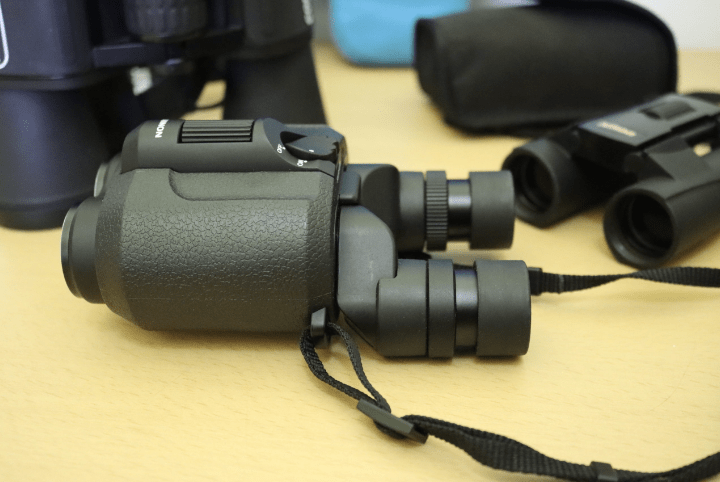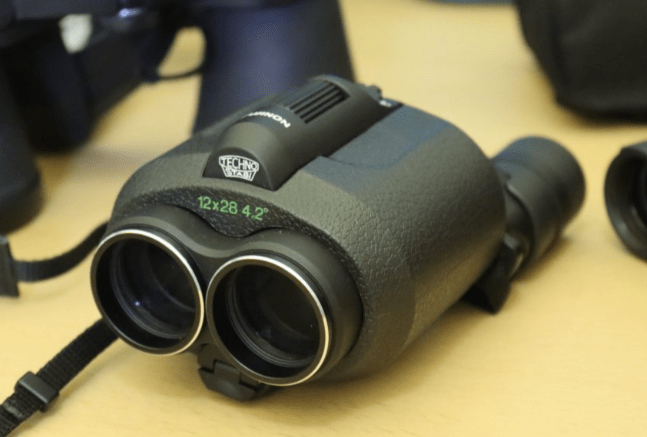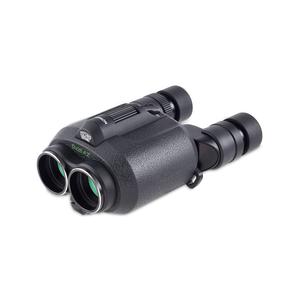Best Image Stabilized Binoculars
In the vast world of optical technology, image stabilized binoculars stand as a beacon for enthusiasts and professionals alike, offering an unparalleled viewing experience that combines clarity with stability. As we navigate through April 2024, the evolution in this field has brought forth an array of choices, each promising to transform how we observe the intricacies of our environment. From birdwatchers to stargazers, the right pair of binoculars can indeed make all the difference.
In this article, we delve into the critical aspects to consider when selecting image stabilized binoculars, ensuring your investment brings you closer to the world's wonders.
If you're pressed for time, here's our pick of the top two stabilizing binoculars:
Quick Start:
- Image Stabilized Binoculars: Buyer’s Guide
- Best Stabilized Binoculars: TOP 5
- Best Image Stabilized Binoculars: Comparison
- Canon 18x50 IS
- KITE OPTICS 12x42 NAVATAQ HORIZON ONE
- Canon 12x36 IS III
- ZEISS 20x60 Classic S
- Fujinon 12x28 Techno-Stabi
- FAQ about Stabilizing Binoculars
Image Stabilized Binoculars: Buyer’s Guide
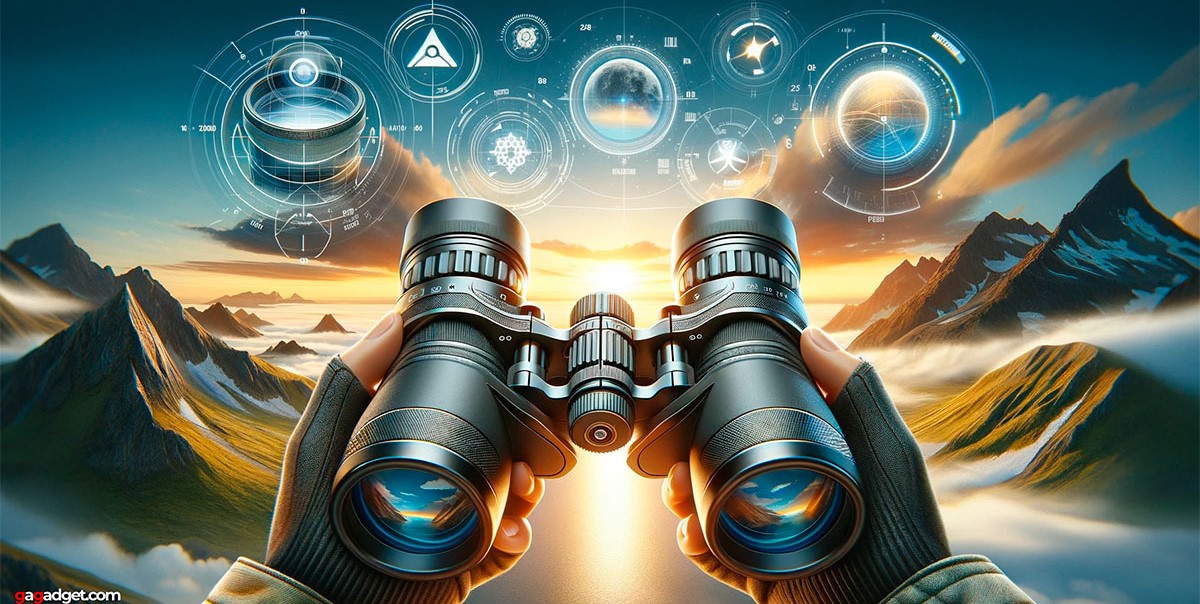
Image stabilized binoculars are a game-changer for those who love to observe the world in detail. Whether you're gazing at distant birds, watching boats sail by, or admiring the stars, these binoculars ensure a clear, steady view, free from the blurs of hand shake or movement.
But with so many options available, how do you choose the right pair for you? Let's dive into the key factors you should consider.
Magnification and Objective Lens Diameter
When you see numbers like 10x30 on binoculars, the first number tells you the magnification power, and the second number is the size of the front lenses in millimeters. Higher magnification brings objects closer, but it can also make the image shakier and narrower in view. A larger objective lens means a brighter and clearer image, but it also means heavier binoculars.
It's all about finding the right balance for your needs. For instance, if you're into birdwatching or sports, you might lean towards a 10x or 12x magnification. For stargazing or low-light conditions, a bigger objective lens like 40mm or 50mm could be better. And if you're after something versatile and easy to carry, an 8x25 or 10x30 could be just right.
Image Stabilization System
There are a few different ways binoculars can stabilize images:
Lens Shift: A gyroscope inside moves a lens element to counteract movement. It's quick and effective but uses battery power and might slightly distort the image. Canon 12x36 IS III is a popular example.
Mechanical: This system uses springs or pendulums to balance movement. It's simple and reliable but adds weight and might not be as precise. Zeiss 20x60 S binoculars use this method.
Electronic: Sensors and microprocessors adjust the image on a digital display. It's customizable but might feel less natural and can have some lag.
Consider what's most important to you: speed, accuracy, or something else? Some binoculars also let you adjust the level of stabilization for different situations.
Lens Coating and Prism System
The lens coating reduces reflections and improves image brightness and sharpness. It can be single-coated, multi-coated, or fully multi-coated. The prism system, either roof prism or Porro prism, affects the binoculars' shape and image quality.
Roof prisms are sleeker, while Porro prisms are bulkier but often cheaper and offer a wider view. Look for high-quality coatings and a prism system that suits your preferences.
Weight and Durability
Especially with image stabilized binoculars, you'll want something comfortable to hold for long periods and durable enough to handle different environments. Look for lightweight yet sturdy designs and features like waterproofing, fog proofing, and shock resistance to protect your investment.
Drawing from our experience, it's crucial to find a balance between power and portability. We've learned that the right pair of binoculars can transform your viewing experience, whether you're tracking wildlife or exploring the night sky.
Image stabilized binoculars are an excellent choice for anyone looking to enjoy a clear, steady view of their surroundings. By considering factors like magnification, lens diameter, stabilization system, optics quality, and durability, you can find the perfect pair to suit your needs and budget.
Best Stabilized Binoculars: TOP 5
Here are the top current image stabilization binoculars that you can find on the market:
- Advanced optical image stabilization minimizes shake
- High 18x magnification brings distant objects into close view
- Durable, water-resistant design suitable for outdoor use
- Accepts 58mm filters and lens hoods for enhanced viewing
- Remarkable close focus distance for detailed observation
- Advanced 2° angle correction
- Ergonomic design
- Impressive 60-hour battery life
- Waterproof and fog-proof with IPX7 rating
- Durable and user-friendly
- Advanced Image Stabilization
- High 12x magnification for detailed observation
- Compact and lightweight design for easy portability
- Long battery life for extended use
- Wide field of view for an immersive experience
- Mechanical image stabilization
- Battery-free stabilization system
- High-quality German optics
- Durable, water-resistant construction
- Wide interpupillary adjustment
- Powerful 12x magnification
- ±3° image stabilization
- Waterproof up to 33 feet
- Compact and lightweight design
- Comfortable eye relief and twist-up eyecups
Best Image Stabilized Binoculars: Comparison
For easy comparison, here is a table of specifications of the best stabilizing binoculars:
| Specification | Canon 18x50 IS | Canon 12x36 IS III | NAVATAQ HORIZON ONE 12x42 | ZEISS 20x60 Classic S | Fujinon 12x28 Techno-Stabi |
| Magnification | 18x | 12x | 12x | 20x | 12x |
| Objective Lens Diameter (mm) | 50 | 36 | 42 | 60 | 28 |
| Prism Type | Porro | Porro | Porro | Porro | Porro |
| Field of View @ 1000 yd (ft) | 194.3 | 262 | 202 | 156.63 | 219.9 |
| Exit Pupil Diameter (mm) | 2.8 | 3 | 3.5 | 3 | 2.3 |
| Eye Relief (mm) | 15 | 14.5 | 17 | 13 | 16.5 |
| Image Stabilization | Yes | Yes | Yes | Mechanical | Yes |
| Waterproof | Water-resistant | Water-resistant | IPX7 | Water-resistant | Waterproof (up to 33 ft) |
| Weight (g) | 1179.33 | 660 | 720 | 1660 | 500 |
| Dimensions (in) | 7.6 x 6 x 3.2 | 6.9 x 5 x 2.8 | 7.5 x 5.5 x 2.4 | 10.8 x 6.3 | 5.8 x 4.3 x 2.9 |
Now let's take a closer look at each of the best image stabilization binoculars.
Canon 18x50 IS
Editor's Choice
The Canon 18x50 IS Binoculars stand out in the optics market, offering an unparalleled combination of high magnification, advanced image stabilization, and exceptional optical quality. These binoculars are designed to bring distant subjects into close, clear view without the need for a tripod, making them ideal for a wide range of outdoor activities including wildlife observation, sporting events, and stargazing.
Featuring an impressive 18x magnification, the Canon 18x50 IS allows users to observe detailed scenes from far away, a feature particularly beneficial for big game hunters, extreme sports spectators, and nature enthusiasts. The built-in optical image stabilization technology is a highlight, effectively compensating for hand tremors and movements to provide a steady view. This technology, borrowed from Canon's expertise in video camcorders, uses a Vari-Angle Prism system to instantly adjust and stabilize images, significantly reducing eye fatigue and making long observation periods more comfortable.
Optical performance is further enhanced by the use of field-flattening lenses and UD (Ultra-low Dispersion) glass elements, which work together to improve edge-to-edge sharpness and minimize chromatic aberration. The result is exceptionally clear and vivid images across the entire field of view. The binoculars also feature a remarkable close focus distance of 19.7 feet, allowing for detailed observation of subjects at relatively close ranges.
The 18x50 IS binoculars are built to withstand the rigors of outdoor use, featuring a water-resistant design and a durable rubber coating for a secure grip, even in wet conditions. The inclusion of a standard 1/4"-20 threaded tripod socket offers flexibility for extended observation sessions. Additionally, these binoculars are designed with user convenience in mind, accepting 58mm filters and lens hoods to enhance viewing experiences under various lighting conditions and protect the optics from dew and stray light.
Pros:
- Advanced optical image stabilization minimizes shake for clear viewing
- High 18x magnification brings distant objects into close view
- Durable, water-resistant design suitable for outdoor use
- Accepts 58mm filters and lens hoods for enhanced viewing
- Remarkable close focus distance for detailed observation
Cons:
- Heavier design not ideal for casual use without support
- High magnification can be challenging without stabilization
- Requires AA batteries for image stabilization feature
Summary: The Canon 18x50 IS Binoculars are a premium optical tool designed for serious outdoor enthusiasts who demand the best in magnification, image stabilization, and optical quality. They offer a powerful, stabilized view that brings distant scenes into intimate detail, making them ideal for a wide range of applications. While they may be heavier and require batteries for their stabilization feature, the benefits they provide in terms of viewing quality and flexibility make them a valuable asset for any outdoor adventure or observation activity.
- Advanced optical image stabilization minimizes shake for clear viewing
- High 18x magnification brings distant objects into close view
- Durable, water-resistant design suitable for outdoor use
- Accepts 58mm filters and lens hoods for enhanced viewing
- Remarkable close focus distance for detailed observation
KITE OPTICS 12x42 NAVATAQ HORIZON ONE
Best Overall
The NAVATAQ HORIZON ONE 12x42 Image Stabilized Binoculars by Kite Optics represent a significant leap forward in optical stabilization technology, designed to offer unparalleled stability and clarity in a range of conditions. These binoculars are engineered to defy the challenges posed by unstable platforms and the natural limits of human steadiness, making them an indispensable tool for professionals in shipping, defense, industry, construction, and other sectors that demand precision observation at a distance.
Featuring an advanced stabilization system that corrects up to 2° of movement, the NAVATAQ HORIZON ONE ensures that images remain stable and clear, free from lag or the wave effects commonly experienced with inferior models. This high level of stability is crucial for observing detailed scenes from moving vehicles, boats, or in windy conditions, where traditional binoculars fall short.
The ergonomic design of the NAVATAQ HORIZON ONE is tailored for ease of use and efficiency, allowing operation with a single switch and focus wheel, even when wearing gloves. An auto-off timer and angle detection shutoff option further enhance its user-friendly nature, ensuring that the binoculars conserve energy and remain ready for use when needed.
Powered by just two AA batteries, these binoculars boast an impressive 60-hour runtime, with a spare battery compartment for additional AAs, ensuring that you're never caught off guard by a low battery. The inclusion of a low battery indicator provides timely alerts for battery replacement.
The NAVATAQ HORIZON ONE is built to withstand the rigors of outdoor use, featuring IPX7 waterproofing and replaceable silicone armoring for durability in any environment. Rubber sun-shielding eyecups and silent operation minimize distractions and discomfort during prolonged use, while the hard carry case offers protection and portability.
Pros:
- Advanced 2° angle correction for unparalleled image stability
- Ergonomic design for easy operation, even with gloves
- Impressive 60-hour battery life with low battery indicator
- Waterproof and fog-proof with IPX7 rating and nitrogen filling
- Durable and user-friendly with silent operation and sun-shielding eyecups
Cons:
- Requires AA batteries, which may need regular replacement
- Heavier than standard binoculars, potentially affecting portability
Summary: The KITE OPTICS 12x42 NAVATAQ HORIZON ONE Binoculars from Kite Optics redefine the standard for optical stabilization in binoculars. With military-grade stabilization, long battery life, and rugged construction, they offer an exceptional viewing experience in the most challenging conditions. While they do require the use of AA batteries and come with a higher price tag, the benefits of their advanced stabilization and durability make them a worthwhile investment for professionals and enthusiasts seeking the best in optical performance.
- Advanced 2° angle correction for unparalleled image stability
- Ergonomic design for easy operation, even with gloves
- Impressive 60-hour battery life with low battery indicator
- Waterproof and fog-proof with IPX7 rating and nitrogen filling
- Durable and user-friendly with silent operation and sun-shielding eyecups
Canon 12x36 IS III
People's Choice
The Canon 12x36 IS III Image Stabilized Binoculars are a compact and portable optical solution designed for enthusiasts and professionals alike who require steady and clear views for activities such as birdwatching, nature observation, and sports events. These binoculars incorporate Canon's proprietary Image Stabilization (IS) technology, adapted from their lens systems, to compensate for hand-shake, providing smoother and more stable views.
The IS system utilizes vari-angle prisms and internal gyro sensors to detect and correct for movement, ensuring steady images even when observing for extended periods. A microcomputer with proprietary algorithms enhances IS operation, allowing for shorter startup times and more efficient energy consumption. This technology is particularly useful for high-magnification observation, where even slight movements can significantly impact image stability.
Optically, the binoculars feature Canon's Super Spectra multicoatings to reduce light loss and improve image contrast. A Porro prism optical path provides a rich depth of field, aiding in distance judgment between objects. The doublet field-flattener corrects spherical aberration, ensuring distortion-free views across the entire field of view. With a wide 60° apparent angle of view, users can enjoy an immersive observational experience.
The Canon 12x36 IS III binoculars are designed for ease of use and portability, measuring just 6.9 inches in length and weighing a little over 23 ounces. They are powered by two AA batteries, which provide up to nine hours of continuous runtime at 77°F. With a long 14.5mm eye relief and a comfortable 3mm exit pupil, these binoculars are suitable for extended periods of use, even for those wearing eyeglasses.
Pros:
- Advanced Image Stabilization for steady, shake-free viewing
- High 12x magnification for detailed observation
- Compact and lightweight design for easy portability
- Long battery life for extended use
- Wide field of view for an immersive experience
Cons:
- Requires AA batteries for operation
- Limited low-light performance due to 36mm objective lenses
- May be challenging to hold steady at high magnification without stabilization
Summary: The Canon 12x36 IS III Image Stabilized Binoculars offer a blend of advanced stabilization technology, optical quality, and portability, making them a valuable tool for anyone seeking clear and steady views in various observation activities. As indicated by our tests, they may have some limitations in low-light conditions and require batteries for the IS feature, but their overall performance and convenience make them a solid choice for enthusiasts and professionals alike.
- Advanced Image Stabilization for steady, shake-free viewing
- High 12x magnification for detailed observation
- Compact and lightweight design for easy portability
- Long battery life for extended use
- Wide field of view for an immersive experience
ZEISS 20x60 Classic S
Premium Choice
The ZEISS 20x60 Classic S Image Stabilization Binoculars are a masterpiece of optical engineering, designed to provide an unparalleled viewing experience for serious outdoor enthusiasts and professionals alike. These binoculars combine a powerful 20x magnification with the bright, wide views afforded by 60mm objective lenses, enabling users to bring distant objects into close, crisp focus. The significant achievement here is the incorporation of a mechanical image stabilization system, which compensates for the natural hand tremors that typically blur the image at such high magnifications, allowing for handheld viewing without the need for a tripod.
This innovative stabilization system operates without the need for batteries, making these binoculars exceptionally reliable and ready for use in any situation. The mechanical gimbal-mounted erecting system ensures that the image remains steady and clear, enhancing the overall viewing experience. Furthermore, the binoculars feature ±7 dioptric correction, allowing users to customize the focus to accommodate differences in each eye's vision, ensuring a sharp image for both eyes.
The ZEISS 20x60 Classic S Binoculars are built to last, with ridged rubber armoring that not only provides a secure and comfortable grip but also adds an extra layer of shock resistance. This durability is complemented by water-resistant construction, ensuring these binoculars can withstand challenging weather conditions. Rubber eyecups and a generous interpupillary adjustment range cater to all users, including those with wider facial features or who wear glasses.
Optically, these binoculars stand out with their high geometric brightness and twilight factor, making them ideal for daylight conditions and early twilight observation. The large Porro prism design ensures a wide angle of view and an immersive observational experience, with bright and sharp images that ZEISS lenses are renowned for.
Pros:
- Mechanical image stabilization allows high magnification handheld use
- Battery-free stabilization system ensures reliability and readiness
- High-quality German optics provide bright, sharp images
- Durable, water-resistant construction with comfortable grip
- Wide interpupillary adjustment accommodates various users
Cons:
- Heavy and large, challenging for prolonged handheld use
- Primarily suitable for daylight and early twilight, limited low-light performance
- High price point reflects advanced technology and quality
Summary: When we trialed this product, the ZEISS 20x60 Classic S Image Stabilization Binoculars set the standard for high-magnification, stabilized viewing without the need for electronic support. Combining ZEISS's renowned optical quality with a robust, user-friendly design, these binoculars offer a unique solution for those seeking to observe distant details in natural and outdoor settings. While their size and cost may be considerations, the unparalleled clarity and stability they provide make them an invaluable tool for serious observers.
- Mechanical image stabilization allows high magnification handheld use
- Battery-free stabilization system ensures reliability and readiness
- High-quality German optics provide bright, sharp images
- Durable, water-resistant construction with comfortable grip
- Wide interpupillary adjustment accommodates various users
Fujinon 12x28 Techno-Stabi
Bestseller
The Fujinon 12x28 Techno-Stabi Waterproof Image-Stabilized Binoculars offer a remarkable combination of high magnification and image stabilization, making them an excellent choice for outdoor enthusiasts and professionals alike. With a powerful 12x magnification, these binoculars bring distant subjects into sharp focus, while the ±3° vibration suppression range ensures that images remain steady and clear, even when viewing from moving vehicles or in rough conditions.
One of the standout features of these binoculars is their waterproof capability, which allows them to be submerged up to 33 feet for up to 30 minutes, making them ideal for use in all weather conditions and environments. The multi-coated optics provide bright, crisp images with accurate color and contrast, enhancing the overall viewing experience.
The Techno-Stabi binoculars are designed with user comfort in mind, featuring 16mm eye relief and twist-up eyecups, making them suitable for extended use, even for those who wear glasses. The compact and lightweight design, combined with the stabilization correction of ±3 degrees, ensures that these binoculars are easy to handle and carry, making them perfect for a wide range of activities, including concerts, theme parks, and bird-watching.
Pros:
- Powerful 12x magnification for detailed observation
- ±3° image stabilization for steady viewing without a tripod
- Waterproof up to 33 feet for versatile use
- Compact and lightweight design for easy portability
- Comfortable eye relief and twist-up eyecups for glasses wearers
Cons:
- Smaller 28mm objective lenses limit low-light performance
- Limited field of view compared to larger binoculars
- Stabilization requires battery power, adding to long-term costs
Summary: The Fujinon 12x28 Techno-Stabi Waterproof Image-Stabilized Binoculars are a highly versatile and user-friendly option for those seeking high magnification and steady images in a compact package. We have found from using this product that they may have some limitations in low-light conditions and field of view, but their waterproof design, image stabilization, and overall performance make them a valuable tool for a wide range of outdoor activities.
- Powerful 12x magnification for detailed observation
- ±3° image stabilization for steady viewing without a tripod
- Waterproof up to 33 feet for versatile use
- Compact and lightweight design for easy portability
- Comfortable eye relief and twist-up eyecups for glasses wearers
FAQ about Stabilizing Binoculars
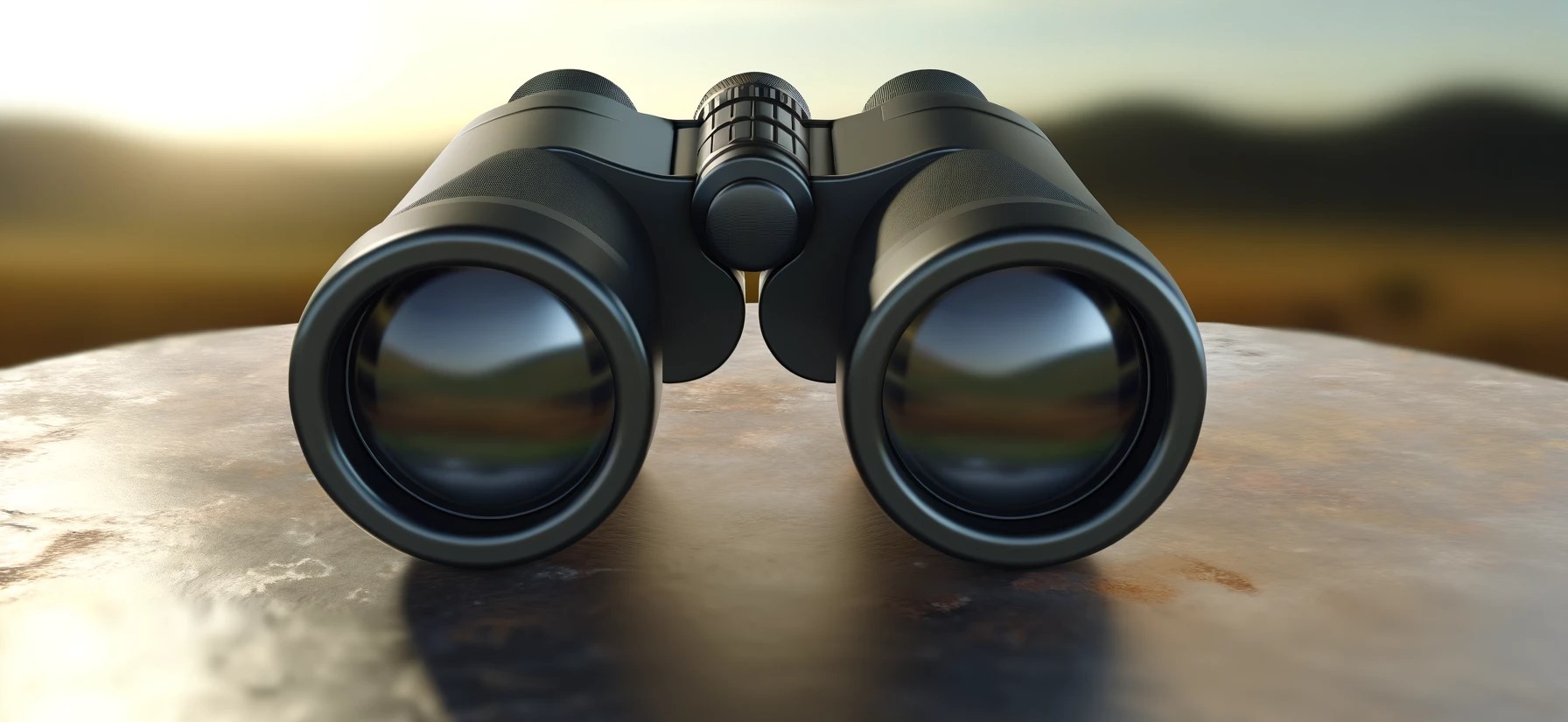
How do image stabilized binoculars work?
There are different types of image stabilization systems used in binoculars, such as lens shift, mechanical, or electronic. They all work by detecting the movement of the binoculars and compensating for it by adjusting the optics or the image. This results in a clear, steady, and comfortable view of your target.
What are the benefits of image stabilized binoculars?
Image stabilized binoculars offer several advantages that make them a valuable tool for both amateur and professional observers:
Enhanced Magnification: With image stabilized binoculars, you can enjoy higher magnification levels without compromising on image quality or stability. This means you can get a closer, more detailed view of distant objects without the usual shake that comes with high-powered optics.
Extended Observation: These binoculars reduce eye strain and fatigue, allowing you to observe your target for longer periods comfortably. This is particularly beneficial for activities like birdwatching, stargazing, or surveillance, where prolonged viewing is common.
Improved Viewing Experience: By eliminating blur, jitter, and shake from the image, image stabilized binoculars provide a smoother, clearer viewing experience. This makes them ideal for tracking moving objects or observing in windy conditions.
Versatility: Image stabilized binoculars are adaptable to various situations and environments. Whether you're on a boat, in a moving vehicle, or standing on shaky ground, they help maintain a steady image, making them suitable for a wide range of activities.
What are the drawbacks of image stabilized binoculars?
While image stabilized binoculars offer many benefits, there are also some drawbacks to consider.
Cost: Image stabilized binoculars are generally more expensive than regular binoculars due to the additional technology and components required for stabilization. This can make them less accessible for casual users or those on a tight budget.
Size and Weight: These binoculars tend to be heavier and bulkier than their non-stabilized counterparts. This can make them less convenient to carry around, especially for extended periods or when traveling light is a priority.
Power Requirements: Most image stabilized binoculars rely on battery power to operate the stabilization system. This means you'll need to keep spare batteries on hand or ensure the batteries are charged for your outing. Some models also offer manual activation, but this can be less convenient than automatic stabilization.
Image Distortion: Depending on the stabilization system used, there may be some distortion or noise introduced into the image. For example, lens shift systems might cause slight chromatic aberration, while electronic systems could result in lag or pixelation.
How to use image stabilized binoculars?
Using image stabilized binoculars is straightforward, and following these steps can help you get the most out of your viewing experience.
Adjust the Eyecups: Start by adjusting the eyecups to fit your eyes comfortably. If you wear glasses, you may need to twist or fold the eyecups down to ensure a clear field of view.
Set the Diopter: If there's a difference in vision between your eyes, use the diopter adjustment (usually located near the right eyepiece) to compensate. Focus on a distant object with the left eyepiece using the central focus wheel, then adjust the diopter for the right eyepiece until the image is sharp.
Adjust the Interpupillary Distance: Move the binocular barrels closer together or further apart until you see a single, circular field of view. This aligns the binoculars with the distance between your eyes.
Activate the Image Stabilization: If your binoculars have a switch or button for image stabilization, turn it on. Some models may have automatic stabilization, while others might require manual activation.
Focus on Your Target: Use the central focus wheel or knob to bring your target into sharp focus. This might be located between the two barrels or on one of the eyepieces, depending on the model.
Enjoy the View: With the image stabilization active and your binoculars properly focused, you can enjoy a clear, steady view of your target. Whether you're observing wildlife, watching a sporting event, or gazing at the stars, image stabilized binoculars can enhance your experience.
Remember to periodically check the battery level if your binoculars are battery-powered, and always store them in a safe, dry place when not in use to maintain their performance and longevity.
How to care for image stabilized binoculars?
Taking good care of your image stabilized binoculars is essential to ensure their longevity and optimal performance. Here are some tips to help you maintain them.
Proper Storage: When not in use, store your binoculars in a dry, cool, and dark place. This helps prevent damage from humidity, heat, and sunlight.
Use Protective Gear: Always use a case, lens caps, or a cover to protect your binoculars from dust, moisture, and impact. This is especially important when transporting them.
Regular Cleaning: Keep the lenses and body of your binoculars clean by using a soft, lint-free cloth, a soft brush, or a blower to gently remove dirt and debris. Avoid using harsh chemicals or abrasive materials that could damage the lenses or coatings.
Handle with Care: Be cautious not to touch the lenses with your fingers, as oils and dirt from your skin can smudge them. Also, avoid rubbing or scratching the lenses or the image stabilization system with hard or sharp objects.
Avoid Extreme Conditions: Protect your binoculars from prolonged exposure to direct sunlight, water, or extreme temperatures. These conditions can cause damage to the optics and the image stabilization mechanism.
Battery Maintenance: If your binoculars use batteries for the image stabilization system, make sure to replace or recharge them as needed. It's also a good idea to remove the batteries if you won't be using the binoculars for an extended period to prevent leakage and damage.
By following these care tips, you can help ensure that your image stabilized binoculars remain in top condition, providing you with clear and steady views for years to come.
Top Image Stabilization Binoculars: Conclusion
As we wrap up our exploration of the best image stabilized binoculars available in April 2024, it's clear that finding the perfect pair is about balancing technological advancements with personal needs. Whether your passion lies in capturing the fleeting moments of wildlife, the thrill of a sports event, or the serene beauty of the night sky, there's a pair out there designed to enhance your viewing experience.
Remember, the key lies in considering factors such as magnification, objective lens diameter, image stabilization technology, and overall durability. With the insights provided, you're now equipped to choose binoculars that will not only meet but exceed your expectations, turning every glance through their lenses into a moment of discovery.
Go Deeper:
